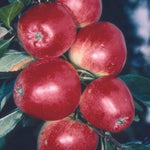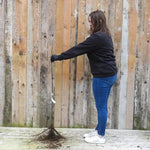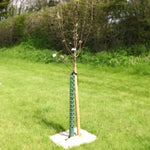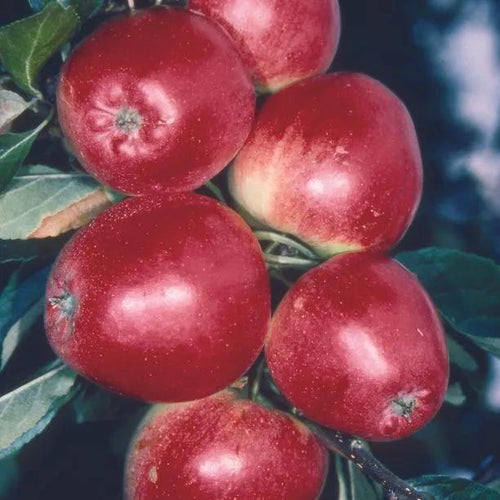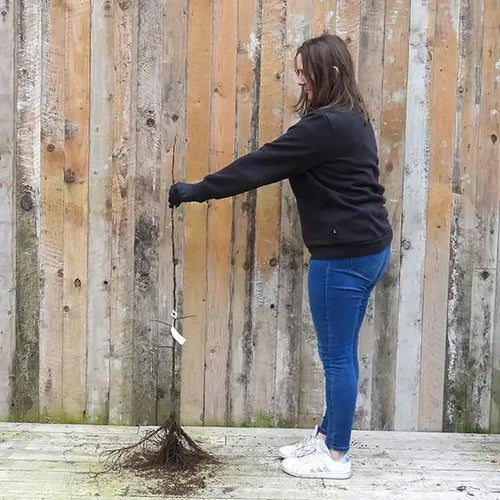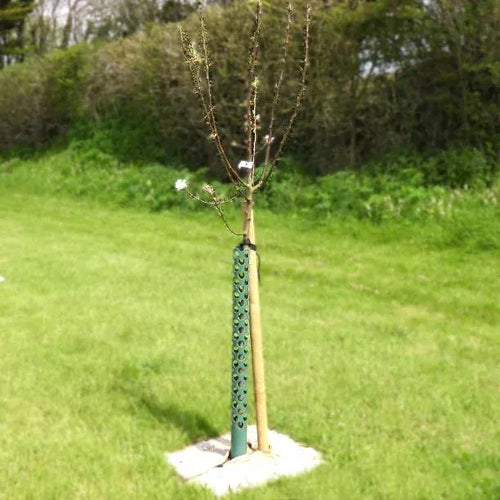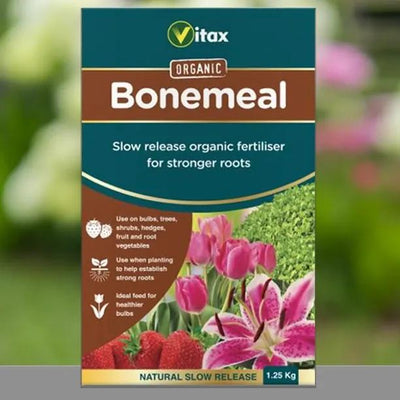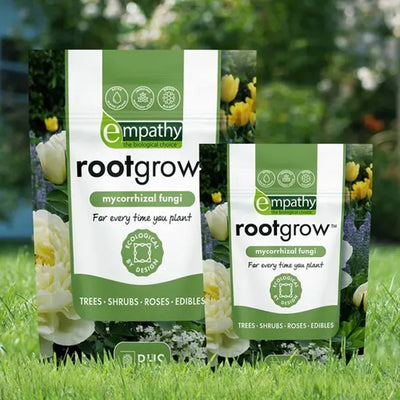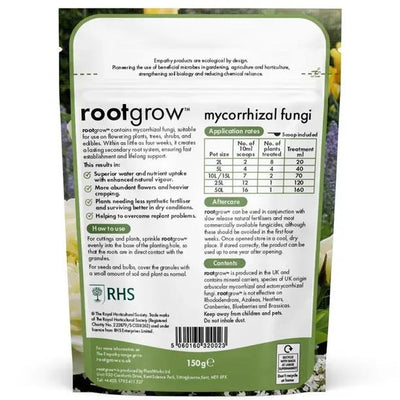Katy / Katja Apple Trees
Katy apples are pale yellow-green as they grow, ripening to a cricket ball red where the light hits them. The skin is a bit tough, which is good for lunch boxes, and the sharply sweet flesh is extra juicy. The flesh of an apple off the tree is firm and softens a bit after a week or so of storage.
Katy is a reliable heavy cropping tree; the fruit are fairly average sized. The flowers are noted as being tolerant to late frosts.
Browse our range of apple trees or see the full variety of fruit trees.
Characteristics of Katy Trees:
- Eating.
- Self Sterile.
- Pollination Group C.
- Spur Bearer: suitable for cordons & training on wires.
- Diseases: Resistant to Canker.
-
Harvest: Early September.
-
Store & ripen in a cool, dry place: About 1 month.
Pollination Partners for Katy:
Katy is self sterile and its flowers must be pollinated to make fruit.
Your trees are in pollination Group C.
This means that they'll cross-pollinate with other apple trees in pollination Groups B, C and D.
See our Guide to Apple Tree Pollination for a full list of partners & more tips about pollination (it's really simple, we promise!).
Apple Tree Rootstocks:
Katy Maidens & Standards are grown on "MM106" rootstocks. These are suitable for espaliers and free standing trees.
Our Katy Cordons are grown on dwarfing "M9" rootstocks.
Our Katy Bush shaped apple trees are grown on "M26" rootstocks. These are free standing trees with short trunks. Their final height is about 3 metres.
Growing Katy Apple Trees:
Katy is a sensible choice for frost prone areas.
Rich soil is important - dig in plenty of good manure and compost before planting.
Soil drainage must be good, although apple trees do like clay soil.
The more sun your trees get, the better your crops will be.
History & Trivia
Katy, or Katya, was bred at the Balsgard fruit research institute in Sweden, 1947. It was first planted in Britain during the mid-60's.
Katy was crossed from Worcester Pearmain and James Grieve.

 Secure, One-Tap Checkout
Secure, One-Tap Checkout
 Hand Picked, Delivered to Your Door!
Hand Picked, Delivered to Your Door! 1 Year Bareroot Guarantee
1 Year Bareroot Guarantee